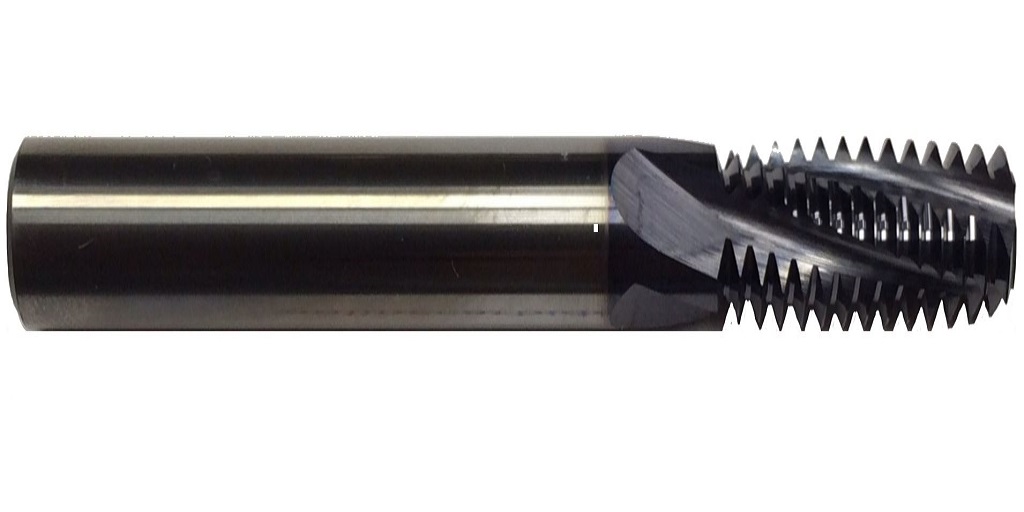While tapping continues to be the most popular method to create threads, thread milling with solid carbide bits is quickly becoming a staple in many industries, especially when dealing with tricky materials.
While thread milling is often associated with smaller components, it can be used to create threads on a larger scale as well. But first, let´s go through some basic definitions.
What Is Thread Milling?
Thread mills, also known as threading end mills, get their name from the action of cutting. As they move along a threaded feature, they remove material and create ridges on each side of the shaft to form male or female threads. The flutes between these ridges are called lands. If you were to look at a cross-section of the threads created, they would look like a mountain range with peaks and valleys. We´ll go into more depth later in this article about the specific geometry of thread mills.
What Is Thread Milling Used For?
Thread milling is most commonly used to create external male or female threads, but it can also be used for internal threads. Although tapping can create internal threads, thread milling with solid carbide bits is often preferred over tapping because it’s more accurate. This is especially true when dealing with difficult materials that are hard to tap or have material limitations, such as titanium alloys.
Tips For Thread Milling With Solid Carbide Bits
Thread milling yields better hole quality than tapping, reducing the risk of having to scrap a part just because of a botched thread. These tips will help you get the most out of your thread milling experience.
Mind Your Passes
This is the same principle we need to follow when machining components. When dealing with challenging materials, or when performing coarse thread pitches, you will need more passes to ensure higher hole quality.
Use Climb Milling
Climb milling is the best way to perform thread milling. While conventional milling has its uses, climb milling allows you to have better thermal control and it also reduces tool deflection.
Use Cutter Compensation
For internal threading, using cutter compensation is advised. This way the tool path will take tool wear and deflection into account, allowing for more efficient removal of material and resulting in better hole quality, and minimizing the risk of creating thread diameters that are too large.
Use Rigid Tool Holders
Thread mills experience significant radial pressure when cutting, making it imperative for you to use rigid power milling chucks, end-mill holders, or shrink-fit holders so the tool can remain in place. The use of ER collets is not recommended.
Take Advantage Of The Newer Software
We always feel tempted to micromanage our code when dealing with delicate operations. However, the newer software comes with extremely efficient milling routines that can help you save time or even allow you to experiment with advanced toolpaths designed for effectively thread milling with solid carbide tools.
Of course, these suggestions must be paired with the use of high-quality tools. Online Carbide is an American carbide tool manufacturer that specializes in designing and crafting state-of-the-art machining tools for high-performance workshops. Visit their online store now and find out more about their products.



